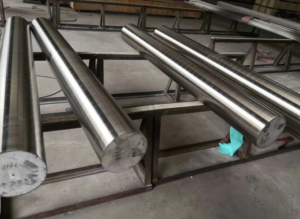Carbon steel and tool steel are two types of steel alloys widely used in various industries due to their distinct properties and applications. In this article, we will delve into the key difference between carbon steel and tool steel, highlighting their composition, properties, and uses.

What is the difference between carbon steel and tool steel?
Difference between Carbon Steel and Tool Steel – 1. Composition
Carbon steel is primarily composed of iron and carbon, with the carbon content typically ranging from 0.12% to 2.0%. The carbon content plays a crucial role in determining the steel’s mechanical properties, such as hardness, strength, and ductility. Depending on the carbon content, carbon steel can be classified into low, medium, and high carbon steel, each with its own set of characteristics.
On the other hand, tool steel is an alloy steel containing various elements, including manganese, silicon, chromium, tungsten, molybdenum, cobalt, and sometimes nickel, copper, and vanadium. These elements are added to enhance the steel’s hardness, wear resistance, corrosion resistance, and toughness, making it suitable for use in tools and cutting implements.
Difference between Carbon Steel and Tool Steel – 2. Properties
Carbon steel exhibits a range of properties depending on its carbon content. Low carbon steel is ductile and easy to weld, making it suitable for applications that require bending or forming. Medium carbon steel offers a balance between strength and ductility, often used in structural applications. High carbon steel, on the other hand, is known for its high hardness and wear resistance, making it ideal for cutting tools and wear-resistant parts.
Tool steel, on the other hand, is renowned for its exceptional hardness, wear resistance, and toughness. Its alloy composition allows it to maintain its properties even under high temperatures and pressures, making it suitable for applications that involve heavy cutting, shaping, or forming. Tool steel also exhibits good resistance to corrosion and oxidation, further enhancing its durability.
Difference between Carbon Steel and Tool Steel – 3. Applications
Due to its versatility, carbon steel finds applications in various industries. Low carbon steel is commonly used in automotive body panels, wire products, and sheet metal. Medium carbon steel is often employed in shafts, axles, and machine parts that require a balance of strength and ductility. High carbon steel, on the other hand, is widely used in tools such as knives, chisels, and drills, as well as in wear-resistant parts like gears and bearings.
Tool steel, on the other hand, is primarily used in the manufacture of cutting tools, dies, and molds. Its high hardness and wear resistance allow it to withstand the rigorous conditions encountered during machining and cutting operations. Tool steel is also used in the production of punches, drills, and other precision tools that require exceptional toughness and durability.
Difference between Carbon Steel and Tool Steel – 4. Manufacturing Processes
The manufacturing processes for carbon steel and tool steel also differ. Carbon steel can be produced through various processes, including open-hearth furnaces, basic oxygen furnaces, and electric arc furnaces. Depending on the desired carbon content and mechanical properties, the steel may undergo further heat treatment, such as annealing, normalizing, or quenching.
Tool steel, on the other hand, typically undergoes more complex manufacturing processes to achieve its desired properties. This may include vacuum melting to ensure a homogeneous alloy composition, followed by hot rolling, forging, or extrusion to shape the steel into the desired form. Heat treatment is also crucial in tool steel manufacturing, as it allows for precise control over the steel’s microstructure and mechanical properties.
Difference between Carbon Steel and Tool Steel – 5. Cost and Availability
In terms of cost and availability, carbon steel is generally more affordable and widely available compared to tool steel. This is due to the simpler manufacturing processes involved in producing carbon steel and its widespread use in various industries. Tool steel, on the other hand, is more specialized and may be more expensive due to its unique alloy composition and manufacturing requirements.
Conclusion
In summary, carbon steel and tool steel differ significantly in their composition, properties, applications, manufacturing processes, and cost. Carbon steel is a general-purpose material used in a wide range of applications, while tool steel is a specialized alloy designed for use in cutting tools and other demanding applications.
Thank you for reading our article and we hope it can help you to have a better understanding of the difference between carbon steel and tool steel. If you are looking for tool steel suppliers online now, we would advise you to visit Sino Special Metal for more information.
As a leading supplier of tool steels from Shanghai China, Sino Special Metal offers customers high-quality tool steel products at a very competitive price.




